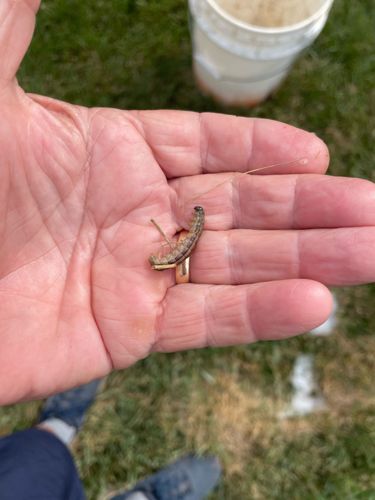Cutworm (larva)
Scientific Name: Agrotis spp., Peridroma spp., Feltia spp. (general examples, specific species cannot be determined from image)
Order & Family: Lepidoptera, Noctuidae
Size: Larvae typically range from 2.5 to 5 cm (1 to 2 inches) in length when fully grown.

Natural Habitat
Cutworms are found in various habitats, including agricultural fields, vegetable gardens, lawns, and meadows. They prefer areas with loose soil where they can easily burrow.
Diet & Feeding
Cutworms are polyphagous and feed on a wide variety of plants, including many agricultural crops (e.g., corn, tomatoes, cabbage, beans) and garden plants. They primarily consume young plant stems and leaves.
Behavior Patterns
Cutworms are nocturnal and hide beneath soil debris or in burrows during the day, emerging at night to feed. They damage plants by severing stems at or just below the soil surface, causing seedlings to wilt and fall over. Some species climb plants to feed on leaves and buds. They overwinter as larvae or eggs and pupate in the soil.
Risks & Benefits
Risks: Cutworms are significant agricultural pests that can cause severe damage to young plants, leading to substantial crop losses. Benefits: As with most insects, they serve as a food source for various predators (birds, some mammals, other insects) and contribute to the decomposition of organic matter.
Identified on: 8/14/2025